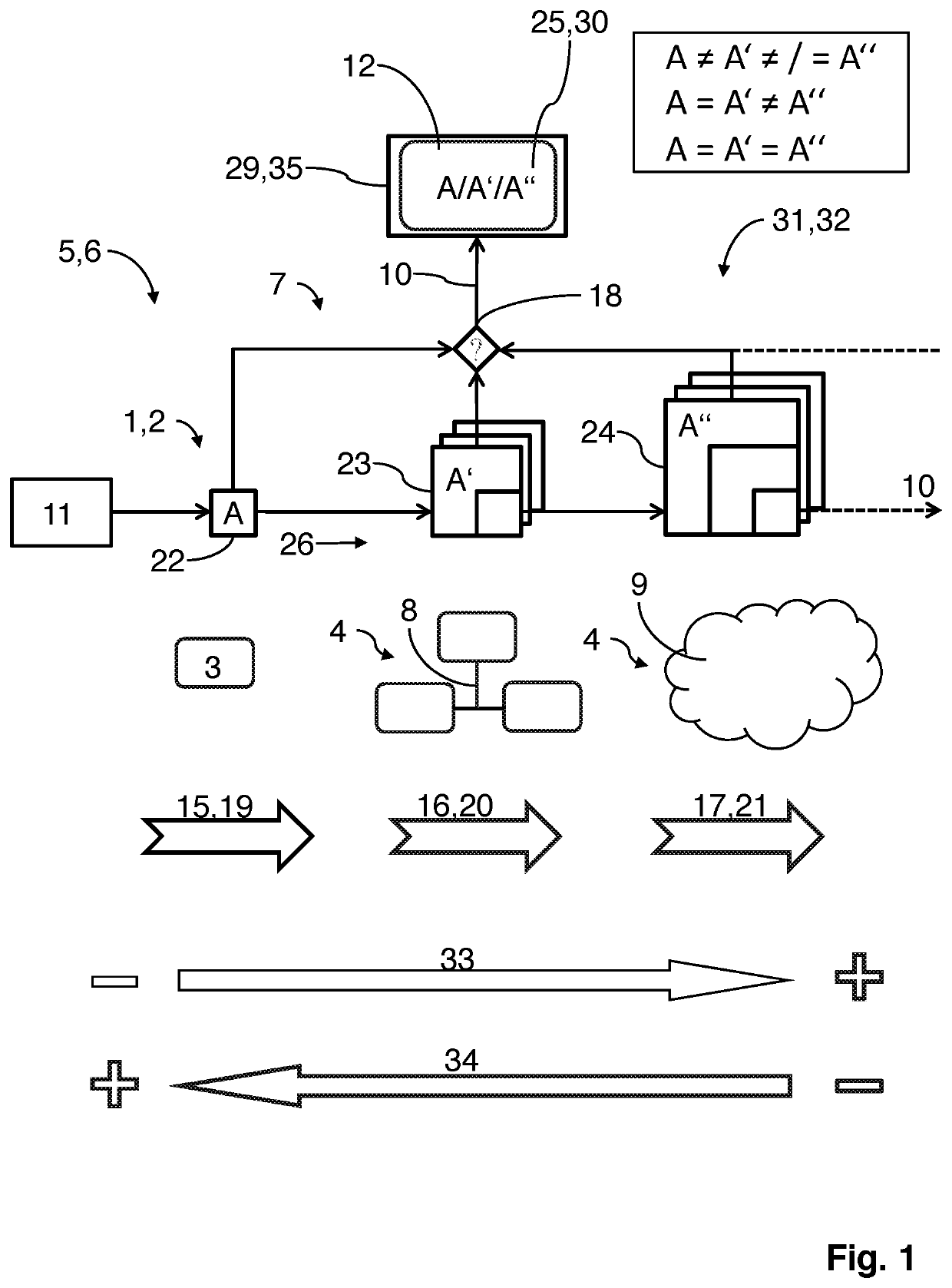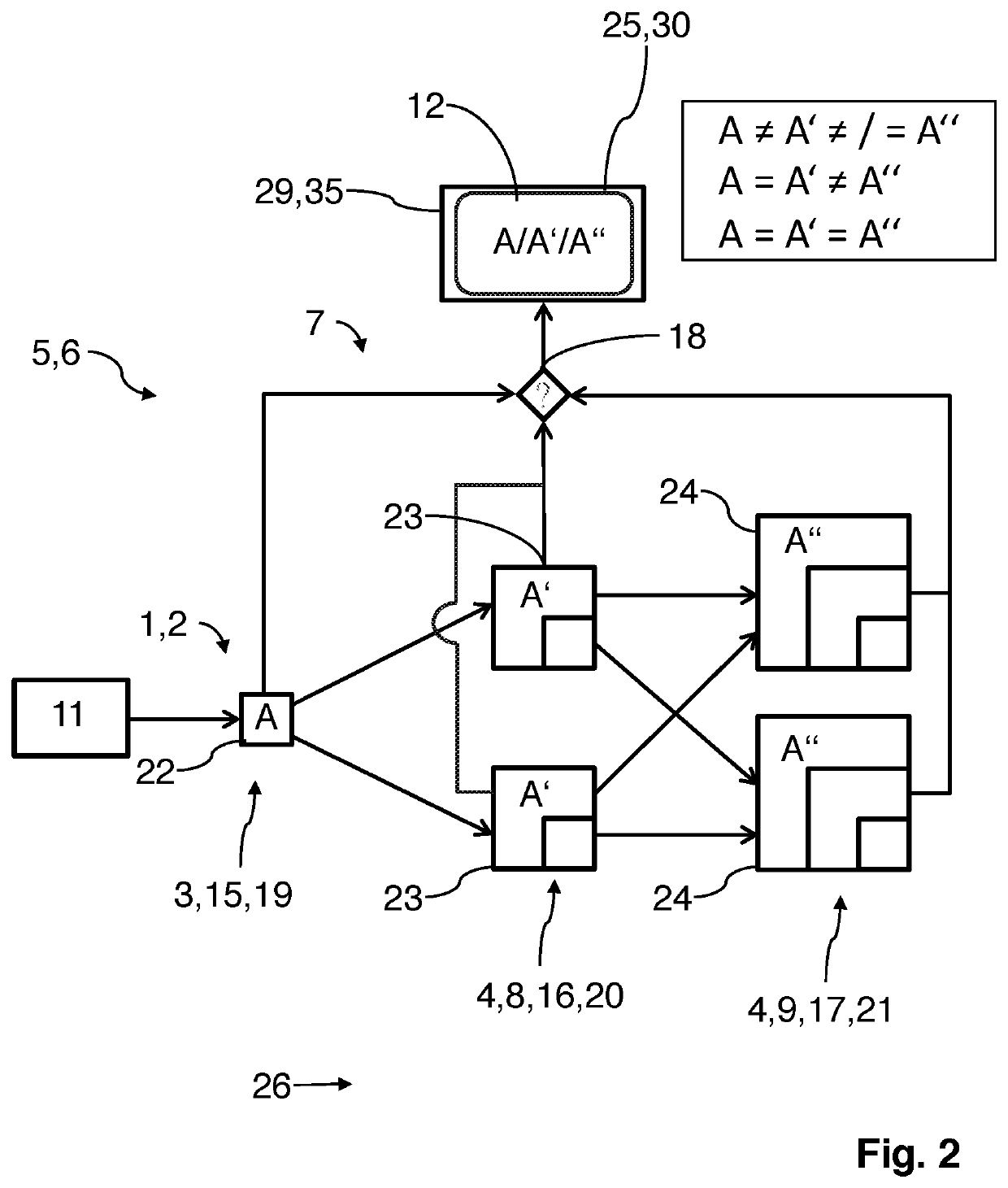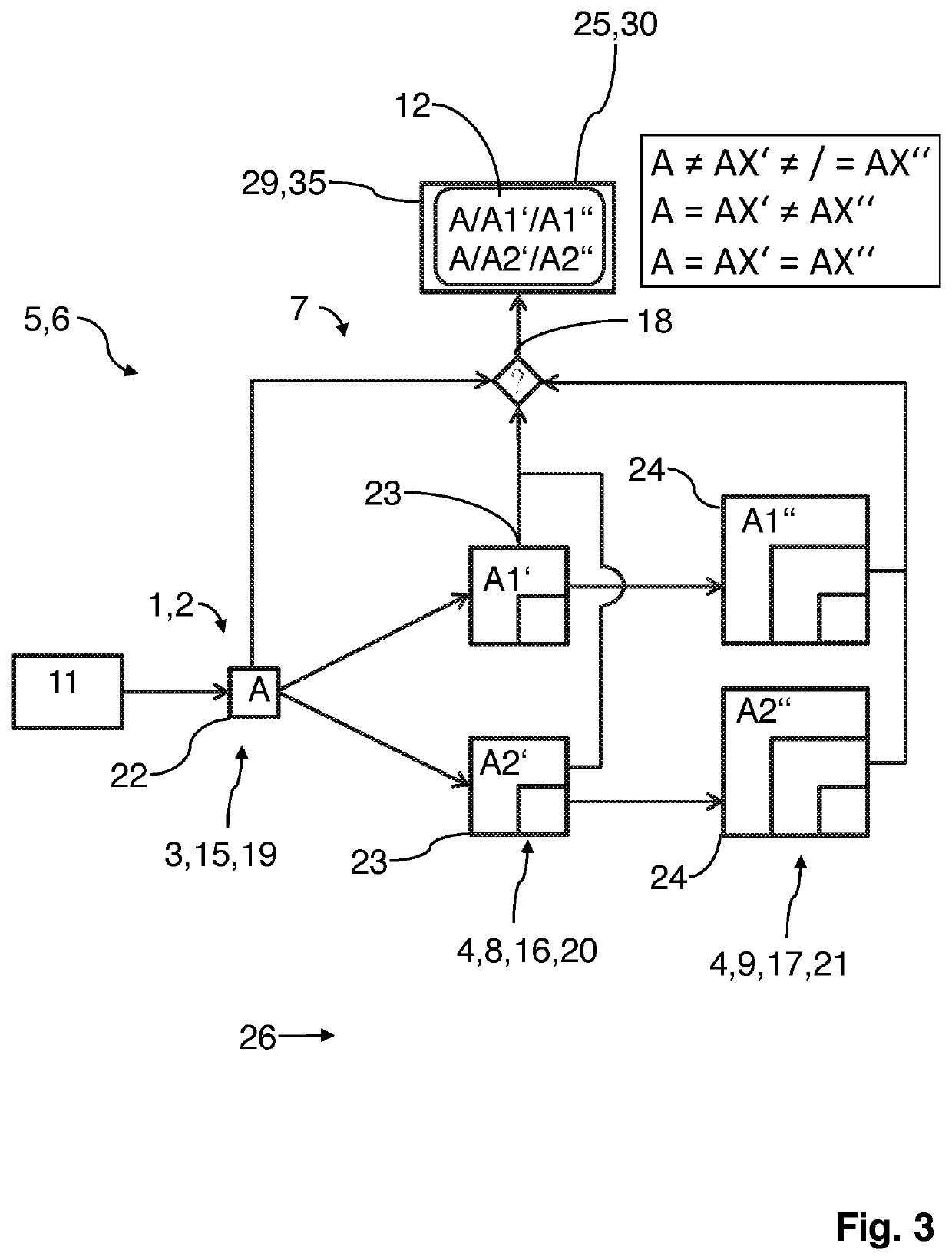Method for reconstructing an output image and/or a sequence of output images from raw image data, image recording device, image recording system, and overall system
- Summary
- Abstract
- Description
- Claims
- Application Information
AI Technical Summary
Benefits of technology
Problems solved by technology
Method used
Image
Examples
Embodiment Construction
[0039]FIGS. 1-4 show different exemplary embodiments of a method according to the invention for reconstructing an output image 10, 22, 23, 24 and / or a sequence of output images 10, 22, 23, 24 (in the case of a video signal) from raw image data 11 (in particular, input images that have been recorded by an image recording device 1), wherein the raw image data 11 is processed in at least two consecutive and / or parallel reconstruction stages 15, 16, 17, and an output image 10, 22, 23, 24 and / or a corresponding sequence of reconstructed output images 10, 22, 23, 24 is output.
[0040]FIG. 5 shows a timeline 13 between the input 27 of raw image data 11, e.g. through the recording of a scene, and the output 28 after the image reconstruction. The details of the image reconstruction are described in detail below. The period between input 27 and output 28 is the lag time 14.
[0041]FIG. 6 shows a possible embodiment variant of an image recording system 5 with an image recording device 1, which is ...
PUM
 Login to View More
Login to View More Abstract
Description
Claims
Application Information
 Login to View More
Login to View More - R&D
- Intellectual Property
- Life Sciences
- Materials
- Tech Scout
- Unparalleled Data Quality
- Higher Quality Content
- 60% Fewer Hallucinations
Browse by: Latest US Patents, China's latest patents, Technical Efficacy Thesaurus, Application Domain, Technology Topic, Popular Technical Reports.
© 2025 PatSnap. All rights reserved.Legal|Privacy policy|Modern Slavery Act Transparency Statement|Sitemap|About US| Contact US: help@patsnap.com



